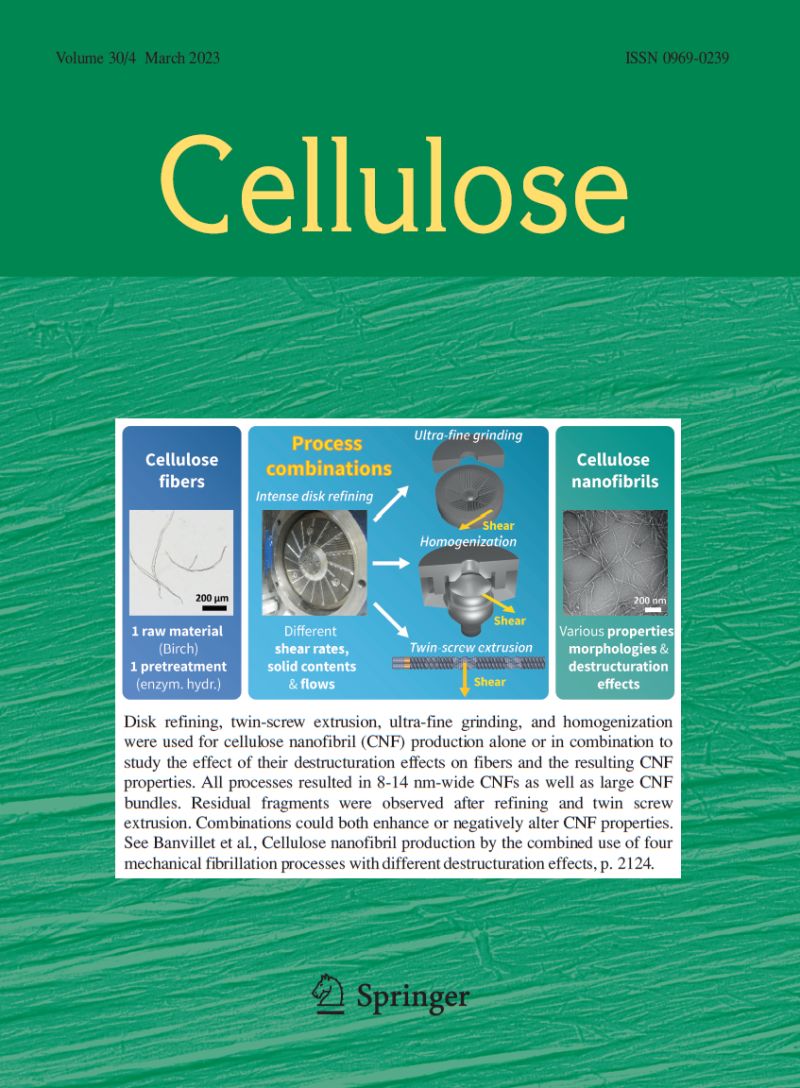The morphological regulation of nanocellulose using a hydrated deep eutectic solvent system
Abstract
As a renewable biomass nanomaterial, nanocellulose demonstrates immense potential for applications in reinforced composites, biomedicine, and nanoelectronics. The morphology of nanocellulose directly governs its properties and performance in specific applications. In this study, a hydrated citric acid/choline chloride deep eutectic solvent (DES) system was employed to modify straw cellulose for preparing nanocellulose. The kinetic interplay between citric acid-mediated hydrolysis and esterification reactions within cellulose during the modification process was systematically investigated. The carboxylate content of the modified cellulose exhibited a linear increase to 0.78 mmol/g within the initial one hour of DES treatment, followed by a plateau phase. Progressive hydrolysis of cellulose was observed throughout the DES treatment. By precisely controlling the carboxylate content and hydrolysis extent of modified cellulose, we successfully prepared nanocellulose with morphology controllably tailored from linear nanofibers to rod-like nanocrystals. The resulting nanocellulose with varying aspect ratios exhibited predictable variations in the mechanical properties of their corresponding films and hydrogels. Furthermore, the stabilization performance of Pickering emulsions using different types of nanocellulose was comparatively analyzed. This work elucidates the mechanism by which hydrated DES treatment conditions regulate the morphology of straw nanocellulose, while also providing a critical foundation and technical framework for nanocellulose production.

 求助内容:
求助内容: 应助结果提醒方式:
应助结果提醒方式:


